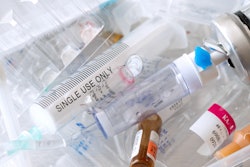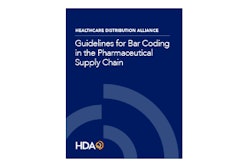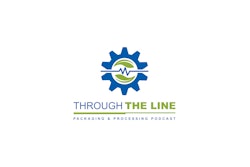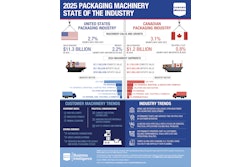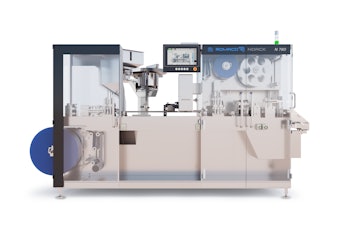
This content was written and submitted by the supplier. It has only been modified to comply with this publication’s space and style.
HDA recognizes the role healthcare distributors can play in minimizing the healthcare sector’s carbon footprint. Many members are already committing to sustainability initiatives—from adopting eco-friendly packaging to setting carbon neutrality goals.
The efforts of HDA and its membership to enhance the healthcare distribution sector’s sustainability is reflected in HDA’s President and CEO Chip Davis’ participation in the National Academy of Medicine’s Action Collaborative on Decarbonizing the U.S. Health Sector (NAM Climate Collaborative). Here, Davis provides his perspective on participating in this public-private partnership and the topic of climate change.
1. Why is now the time to promote sustainability throughout the healthcare supply chain?
The effects of climate change are continuing to escalate — we have seen how worsening hurricanes, tornados, freezes and wildfires have led to devastating ramifications on individuals, and in some cases, there can be ripple effects on a global scale. We are also witnessing the increasing impact that environmental factors like air pollution and water quality are having on public health.
Unfortunately, this issue is not going away, and we cannot downplay the fact that the healthcare sector is responsible for a significant amount of U.S. greenhouse gas emissions. As an industry, healthcare distributors are proud to provide safe and reliable healthcare product deliveries, ultimately supporting the health and wellness of people throughout the U.S. As a sector that already reduces emissions by providing a centralized point of healthcare distribution, HDA and our members feel driven to protect the health of our planet alongside the industry’s ultimate purpose of promoting human health.
2. Why did HDA elect to participate in the NAM Climate Collaborative? What led you to serve as a co-lead of the Health Care Supply Chain and Infrastructure Working Group?
HDA is participating in the NAM Climate Collaborative alongside over 110 Network Organizations and other entities because of the importance of its mission and the collaborative approach to finding solutions to this issue. We are proud to serve with representatives across the healthcare ecosystem, from academics to nonprofits to hospital systems. As natural conveners, HDA and our members regularly partner with the public and private sectors to address public health threats, especially throughout the COVID-19 pandemic.
When I was asked to co-lead the Health Care Supply Chain and Infrastructure Working Group alongside Dr. Michelle McMurry-Heath, CEO and President of BIO, and Greg Smith, EVP of Global Operations and Supply Chain for Medtronic, I was excited at the prospect of working with two respected industry experts to develop meaningful, actionable solutions. From my vantage point leading HDA and interacting daily with healthcare distributor, manufacturer and service provider member executives, I strive to leverage the knowledge I glean from each interaction toward our group’s mission of developing best practices and product manufacturing, packaging and distribution innovations that could cut our sector’s climate impact.
3. How are HDA members reducing their carbon footprint now and planning to continue enhancing sustainability practices moving forward?
HDA distributor members range from Fortune 20 companies to family-run full-line distribution companies, operating nationally from large cities to small communities. Across the board, our members are conducting a range of activities to reduce our greenhouse gas emissions.
Many HDA member companies are making public-facing commitments to reduce their footprint—some setting goals to reduce carbon emissions or even reach carbon neutrality. Others are investing in renewable packaging, implementing solar panels, piloting electronic trucks and vehicles for deliveries and using other green technologies.
Our industry is built on a relentless focus on driving efficiencies, and that foundation naturally lends itself to driving a desire to identify additional innovations that not only curb costs but also create more sustainable practices.
4. What are some of the biggest challenges the healthcare distribution industry will face in the next five years related to climate change?
As recently noted by White House economists, supply chain obstacles are predicted to continue after COVID-19 recedes for a multitude of reasons, many stemming from climate change. While the healthcare supply chain has remained incredibly resilient despite pandemic-related interruptions—and continues to reliably deliver medical products—the fact remains that we operate in a globalized marketplace. Accordingly, many medicines in the U.S. are manufactured in other continents. We’re watching firsthand how lockdowns in certain countries can disturb supply chains. It will be important for healthcare distributors, and the entire healthcare industry, to prepare, in collaboration with governments, for situations in which the supply of raw materials and manufactured goods is hindered by public health and climate-related events.
This leads to another challenge of the possibility of onshoring or near-shoring medicine manufacturing. While there are benefits to offshoring, largely in terms of cost, customers need their medicines when they are prescribed and cannot accept delays or empty shelves. The entire healthcare supply chain, working with policy leaders in both Congress and the White House must evaluate the benefits of continuing offshoring practices against the value, and costs, associated with bringing manufacturing closer to home.
Finally, our members have continued to become more technology centric, but as IT innovations continue, there will be future opportunities and challenges. We are an industry in which data management and forecasting is extraordinarily important to predict precise supply needs—people’s lives depend on the medicines distributors deliver. As new technologies arise, many companies may have the opportunity to start transitioning their IT into even more automated and efficient practices.
5. In recognition of Earth Day, what does the issue of climate change mean to you personally?
While I’ve already discussed the consequences of climate change from a professional perspective, it also resonates with me as an individual. I live in Maryland, and last fall a tornado came right through my neighborhood. While thankfully no lives were lost, it caused an extensive amount of damage. For years, no one in my community needed to be concerned about the prospects of a tornado, but that has obviously changed. The well-being of my children, and generations to come, is a main priority. To think about their lives being negatively affected by climate change drives me to action. Each of us must do our own part—but also work together to advance solutions.
If you would like to join Chip, HDA, and others in developing solutions to reduce climate change, consider joining the NAM Climate Collaborative.



